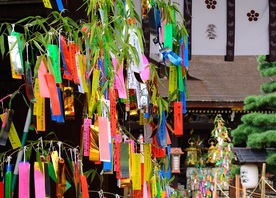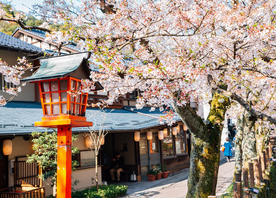For train lovers, long rail journeys are a dream come true. Just another reason why Japan and its amazing rail network is such a dream destination.
Table of contents:

Intro
Train journeys rank as one of the most relaxing ways to travel - doubly so in Japan where the domestic rail network is state-of-the-art, clean, efficient, comfortable, and safe. Can there be anything better than getting settled in your seat and gazing at Japan’s beautiful and diverse landscape? Long train journeys can become a romantic, meditative escape from the day to day while also one of the best ways to get around and see this unforgettable country. But what is Japan’s longest train journey? Let’s take a look.

A Brief (Rather Than Long!) History of Japanese Trains
The modern day history of Japanese trains begins after the end of the Second World War. Following the war, Japan’s rail network was rebuilt under the control of Japan National Railways (JNR) and over the next 20 years, new trains, including limited express, night trains, and new routes were introduced as well as a programme of electrification. However, it was the 1964 Tokyo Olympics that proved the catalyst for Japan’s revolution in rail travel that would see it become a world-leader in trains with the opening of the Shinkansen – the world’s first high speed train to coincide with the games. This ‘bullet train’ became synonymous with Japan and ushered in a golden age for the country’s trains over the course of the next decade. Today the Shinkansen carries more than 150 million passengers every year. Japan has continued to build on its legacy with new innovations and achievements year after year. These included the world’s longest undersea train tunnel (until 2016) and the world’s first maglev (magnetic levitation) metro train. The country’s trains are not just futuristic and technical marvels however, there are also hundreds of beautifully designed vintage trains, as well as quirky and colourful trains designed to look like Hello Kitty, Pokémon, Mickey Mouse, and more. For a longer history of Japanese trains going all the way back to 1800 read our guide to Trainspotting in Japan.
What Is The Longest Rail Journey In Japan?
Interestingly, there isn’t necessarily a single answer to this, but several answers, and it has changed over time too, which means there are actually a number of super long train journeys for you to enjoy. The most common answer to the question is that the Tohoku Shinkansen route is the longest rail journey. This covers an impressive distance of 674.9 km between Tokyo and Aomori. It is the longest shinkansen line and by most metrics, the longest continuous train journey in Japan. The Tohoku Shinkansen gets its name from the Tohoku region, literally meaning ‘North East’ and encompasses the entire area north of Tokyo on the mainland of Japan. As well as the longest, it is among the fastest and most modern in Japan and fully covered by the JR Pass.
Read our article, What Is The Tohoku Shinkansen, for a super detailed guide to this service. As we explained above however (and as you’ll see above), this isn’t the only train journey with a claim on being the longest in Japan.

Can You Travel From The Northernmost Station In Japan To The Furthest South?
At the opposite end of Japan, you’ll find Ibusuki - an onsen town with the most southerly railway station in the country. Located on the southern tip of Kyushu, Ibusuki is famous for its dark sandy beaches, unspoiled nature and onsen. In addition to the scenic train ride to Ibusuki itself. Ibusuki is a popular day trip from Kagoshima city but can easily be visited from anywhere in Kyushu using the JR Pass. It is famous for its sand baths and for the 500 onsen in the area. Getting to Ibusuki is also part of the experience using a special train known as the ‘Limited Express Ibusuki no Tamatebako’. This specially designed train is painted black on the land facing side and white on the sea facing side. The interior, meanwhile, has an industrial wooden design, with turnable seats that can directly turn to face seaside windows to enjoy the ocean view. The ride takes little under two hours with three return trips each day. Prior reservations are required and can be made for free at any JR Ticket window. We suggest making reservations a couple of days in advance, to secure your seating. For more information, check out our Itinerary Tip: Ibusuki.
Of course, travelling from Wakkanai to Ibusuki isn’t a single train journey but multiple train journeys strung together to create an incredible ‘bucket list’ style adventure. Thankfully with a Japan Rail Pass - one ticket for unlimited travel on the JR network - it is definitely possible and arguably an amazing once-in-a-lifetime experience from train enthusiasts and travellers alike.
Sleeper Trains and Luxury Rail Journeys
Bonus Recommendations
- For practical help getting around Japan via train, read our Visitors Guide to Japanese Trains and Railways.
- For Japan’s amazing trains, read our Top 10 Facts about Japan’s Trains.
- And for lovers of train stations (we know you’re out there too) check out Japan’s Biggest and Busiest Train Stations.
- Discover the best train food you’ve ever had. Our guide to Ekiben lunch boxes will tell you everything you need to know.
- We also have a number of guides about specific trains and services, from sightseeing trains such as the Ametsuchi, steam trains like the SI Hitoyoshi, luxury trains like the Saphir Odoriko, and of course, the famous Shinkansen bullet trains.
- And of course, there’s the Japan Rail Pass too. Why is it the best and most affordable way to travel across Japan? Read our guide to Why The JR Pass Is Worth It for a great list of reasons.





